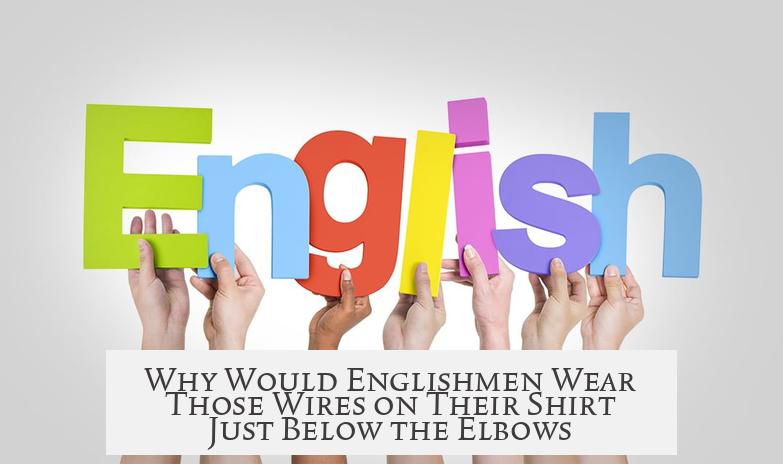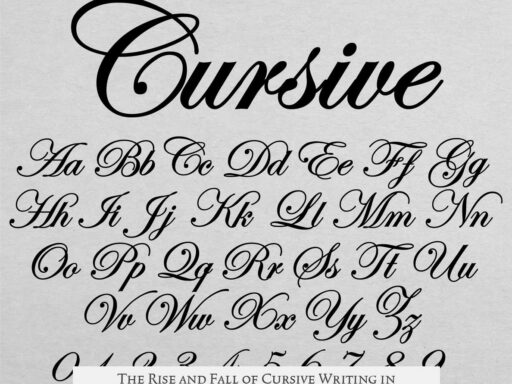Englishmen historically wear those wires, known as sleeve garters, just below their elbows to adjust long shirt sleeves for practical and aesthetic reasons. Sleeve garters hold the cuff at the right length, preventing excess fabric from showing and keeping sleeves clean during work.

Sleeve garters trace back to early functional uses. Before elastics, straps held armor parts in place on arms and legs. This practical origin evolved over centuries into clothing accessories. The Order of the Garter, founded in 1348 by King Edward III, is unrelated to sleeve garters but shares the name, showing the cultural impact of garters in British history.
In the late 1800s, ready-to-wear shirts commonly had extra-long sleeves. Men used sleeve garters to shorten sleeve length so cuffs fit neatly under jackets, improving style and tailoring. When removing jackets, sleeve garters looked more polished than plain elastics. This adjustment also kept shirt sleeves from dirt and damage during manual tasks.

Sleeve garters became part of specific professional dress codes. Bartenders in the late 19th and early 20th centuries, notably influenced by Jerry Thomas, the father of American mixology, wore them as part of a sharp uniform. The look included vests, pocket watches, and sleeve garters, all contributing to a stylish, functional appearance.
| Reason | Details |
|---|---|
| Sleeve Adjustment | Shortens long ready-to-wear shirt sleeves for proper fit |
| Cleanliness | Keeps sleeves from dragging or getting dirty during work |
| Appearance | Offers a polished look without jacket, unlike plain elastics |
| Professional Uniform | Part of bartending attire inspired by 19th-century style leaders |
- Sleeve garters hold shirt sleeves at the correct length.
- They make practical work easier by keeping sleeves clean.
- Their roots lie in armor straps and historical orders.
- Fashion and professional identity reinforced their use.
Why Would Englishmen Wear Those Wires on Their Shirt Just Below the Elbows?

Those wires, or rather elastic bands, are called sleeve garters, and they serve a very practical purpose. Now, before you imagine English gentlemen wired up like some sort of vintage robot, let’s unpack why these curious little bands sat snugly just below their elbows.
Sleeve garters might look odd to us today, but historically, they had a clear and smart function. In the late 1800s, shirts often came with sleeves longer than necessary. Why? Because ready-to-wear fashion wasn’t as precise as bespoke tailoring, and manufacturers simply made sleeves longer to accommodate a variety of arm lengths.

Now, here’s where the sleeve garter shines. Men would slide these elastic bands onto their sleeves, adjusting the sleeve length to ensure it stopped exactly where it should — right at the wrist bone. This was especially important to keep the shirt’s cuffs visible beneath jackets. Imagine going to a fancy event with your sleeves peeking out at just the wrong length. Style faux pas alert!
Adjusting For Fashion—and Function

It was more than just looking sharp. Sleeve garters helped men stay clean while doing their work. If you raised your sleeves with these bands, you’d keep the fabric from drooping into the dirt or grime when your hands got busy. Think barbers, clerks, and bartenders — jobs where wrists meet mess. Suddenly, these little elastics serve a dual purpose: style and hygiene.
Speaking of bartenders, sleeve garters take on a flair of showmanship. Jerry Thomas, often called the Father of American Mixology, codified a distinctive dress code that included sleeve garters, a vest, and a pocket watch. This ensemble was not only practical but part of the stage presence bartenders cultivated to impress patrons. So those “wires” are not just about function; they’re about swagger.

The Old Roots of Garters: From Armor to Elegance
Before sleeve garters graced Victorian fashion, *garters* in general had a martial origin. In medieval times, they were actually straps that attached armor plates to arms and legs — very practical and right on the money for function. Later, King Edward III founded the Most Noble Order of the Garter in 1348, inspired by King Arthur’s legendary Round Table knights.

Of course, the medieval “garter” was a symbol of chivalry and honor, not an elastic band holding sleeves. But knowing this history adds a tantalizing layer of meaning. The Order of the Garter remains Britain’s highest chivalric order today—a fashionable honor if there ever was one.
While the sleeve garters worn by Victorian Englishmen don’t have the same noble pedigree, they do share the name. Fancy, huh?
Beyond Style: Practical Benefits of Sleeve Garters
- Control Your Sleeves: Long ordinary sleeves could look sloppy or get in the way. Sleeve garters gave men control over their shirt’s fit without needing custom tailoring.
- Stay Cleaner: When working with your hands, sleeves pushed up with garters stayed out of the dirt and mess.
- Look Polished: They prevented sleeves from drooping, maintaining a crisp, sharp appearance, especially important in formal or semi-formal settings.
Imagine being an English gentleman in the 1890s, stepping into your tailored waistcoat and jacket. You want that clean, sleek look without expensive bespoke shirts. Those sleeve garters quietly do the job while adding a dapper, intentional twist to your outfit.
Are Sleeve Garters Still Relevant Today?
Good question! While not common in everyday wear anymore, sleeve garters haven’t vanished entirely. Bartenders and mixologists inspired by the golden age of cocktails often sport them as part of a retro-chic uniform. Collectors of vintage fashion and historical reenactors cherish them too.
For anyone who works with their hands but still craves a touch of old-school class, sleeve garters offer a practical, stylish solution to the classic sleeve length dilemma.
Wrapping Up the Sleeve Garter Mystery
So, why would Englishmen wear those wires on their shirts just below the elbows? It boils down to a blend of practicality and style. Sleeve garters were neat tricks for adjusting sleeve length, keeping sleeves clean and tidy, and maintaining a polished appearance without custom tailoring. Rooted in centuries of history, from armor straps to aristocratic orders, these little elastics packed a lot of punch in their simplicity.
Next time you spot someone rocking sleeve garters—whether behind a bar or at a themed party—you can appreciate the heritage and smarts behind them. And maybe even give a little nod to those pragmatic Englishmen who slipped on their sleeve garters and got down to business, looking sharp while doing it.
Fun fact to leave you with:
“The term ‘sleeve garter’ might sound like something from a Shakespearean play, but it’s really just a smart way to keep your sleeves just so—no mess, no fuss, and a dash of old-world charm.”
Would you give sleeve garters a try for your next formal event? Are there modern equivalents in fashion that borrow this clever idea? Share your thoughts—maybe it’s time for sleeves to make a comeback in style and function!
Why did Englishmen wear wires or sleeve garters just below their elbows?
They wore sleeve garters to adjust the length of their shirt sleeves. Shirts in the late 1800s often had extra-long sleeves, and garters helped keep sleeves at the right length.
Were sleeve garters only for style, or did they have a practical use?
Sleeve garters were practical. They kept sleeves from getting dirty by holding them above the wrists during work. This was especially useful in times when shirts were not custom-tailored.
Are sleeve garters connected to any historical traditions or orders?
Not directly. While the Order of the Garter exists since 1348, sleeve garters worn on shirts serve a different practical role rather than a ceremonial or knightly one.
Why were sleeve garters preferred over plain elastics?
Plain elastics could adjust sleeve length but looked plain or unattractive when men took off their jackets. Sleeve garters offered a neater, more stylish appearance.
Did any professions famously use sleeve garters?
Yes, bartenders in the 19th century, like Jerry Thomas, wore sleeve garters as part of their uniform. It was a mark of style and practical working attire in mixology bars.




